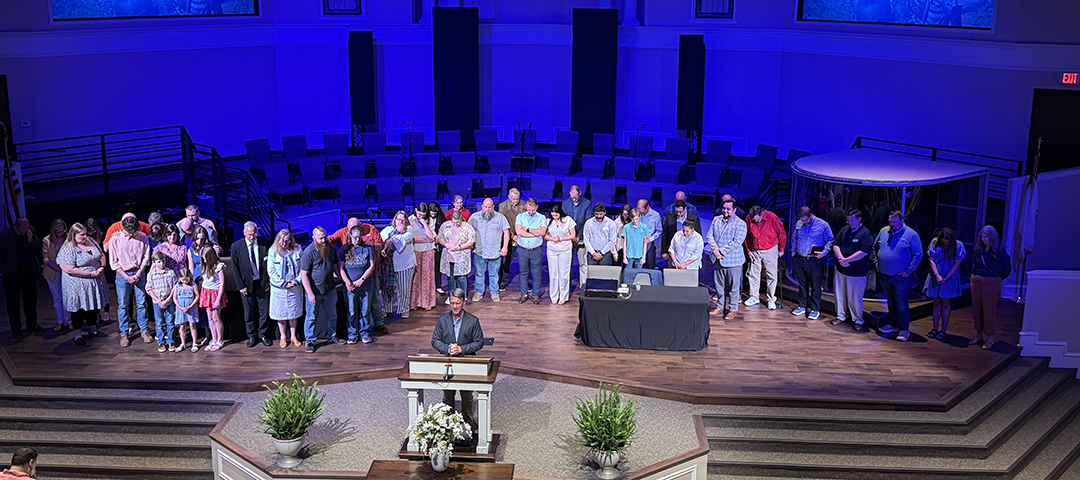
New Spaces, New Faces, Same Gospel
July 29, 2025
Following Where God Leads: The Wagners’ Story
August 12, 2025By Larry Barker, VP of Church Strategy and Training
How exciting to see our team of North American church planters increasing! We officially welcomed five new BMA Global church plants recently at the BMA National Meeting. This brings our team to a total of 20 in eight different languages (English, French, Spanish, Russian, Urdu, Arabic, Garifuna, and Ukrainian). These church plants are being sent out by their sending churches with their prayers, support, and ongoing oversight. The sending (mother) church is not just a token vote but an endorsement of biblical proportion as seen in Acts 13:1-3 with Barnabas and Saul.
Temple Baptist Church in Jonesboro, AR, is the sending church for Clinton Morris and his family. They will be going to plant a church in Indianapolis, IN. New Testament Baptist Church in Sullivan, MO, is the sending church for Chuck Tedrow in Union, MO, where they are already in the process of planting a new congregation in a location where the previous church disbanded. Parkview Baptist Church in Pensacola, FL, is the sending church for our newest language group, Ukrainian, and Vlad Beckley is meeting with the new group there.
Jason Goodwin and his family have already been on the field in Ruston, LA, for about six months, and they were sent by First Baptist Church of Magnolia, AR. Then our latest Hispanic church plant is just beginning in Lake Wells, FL, with Alberto Costales and Javier Velasquez. Their sending church is The Church Without Walls in Cayay, Puerto Rico. These new planters and their families have been called by God, endorsed by their home churches, and now approved by our association to plant new congregations just like Paul did in the book of Acts.
You definitely see a pattern in Acts that is commonly referred to as the Pauline Cycle. David J. Hesselgrave describes it as this: “Missionaries Commissioned, Audience Contacted, Gospel Communicated, Hearers Converted, Believers Congregated, Faith Confirmed, Leadership Consecrated, Believers Commended, Relationships Continued, and Sending Churches Convened.” There was an inward focus on spiritual growth (edified and established) while there continued to be an outward focus on spiritual expansion (added, increased, and multiplied). The call to spiritual growth is first a call to depth before it is a call to width.
Reproducing churches are characterized by the value and priority they place on starting new churches. They invest in church planting and have established strong ongoing relational and financial support for starting new churches. Rather than the fruit of their own tree, they count the harvest by the other trees they plant in the orchard. During the three years that Paul was in Ephesus three churches were planted: Colossae, Laodicea, and Hierapolis. In the New Testament you see the multiplication of disciples, leaders, and churches.
Church planting is focused on the harvest with four irreducible minimums: soil, seed, sower, and the Holy Spirit. The sowers were Paul and his team. The seed, of course, was and is the Gospel of Jesus Christ. The soil was what Paul was always looking for, receptive people (Romans 10:14). The Spirit of God must be present to draw people to the truth through conviction and for regeneration to occur. These four necessities remain constant and removing one makes biblical church planting and/or church health impossible.
Several years ago, the theme for World Missions Day said it well: Go, Disciple, Plant, Repeat. That describes what is needed in seeking to begin and continue with a biblical ecclesiology. Make disciples first and then plant churches out of the harvest. This method is driven by the Holy Spirit in obedience to God’s word as you seek to evangelize people in your context. The scriptures tell us that the truth “spread abroad” everywhere. Difficult at times? Definitely! Complicated? No!
In Discovering Church Planting, J. D. Payne states, “Biblical church planting is evangelism that results in new churches.” In the scriptures the normal process was that the birth of churches happened after disciples were made. Evangelism resulted in new disciples and then those new followers of Christ began to gather together and identify as a church. The Biblical approach is for churches to be birthed from making disciples. Yet, quite often we default to other methods and things we believe we must have to plant or sustain a church.
It is exciting to see more and more churches actively and intentionally pursuing these “irreducible ecclesiastical minimums!” J. D. Payne states, “When churches and Christians are shocked at a biblical model, it reveals just how far away from the Scriptures we have moved in our missionary practices!” Paul’s team focused on evangelism and were always seeking the lost who might be receptive to the gospel. Then they focused on edifying these new believers and establishing them so that they would repeat the biblical process.

